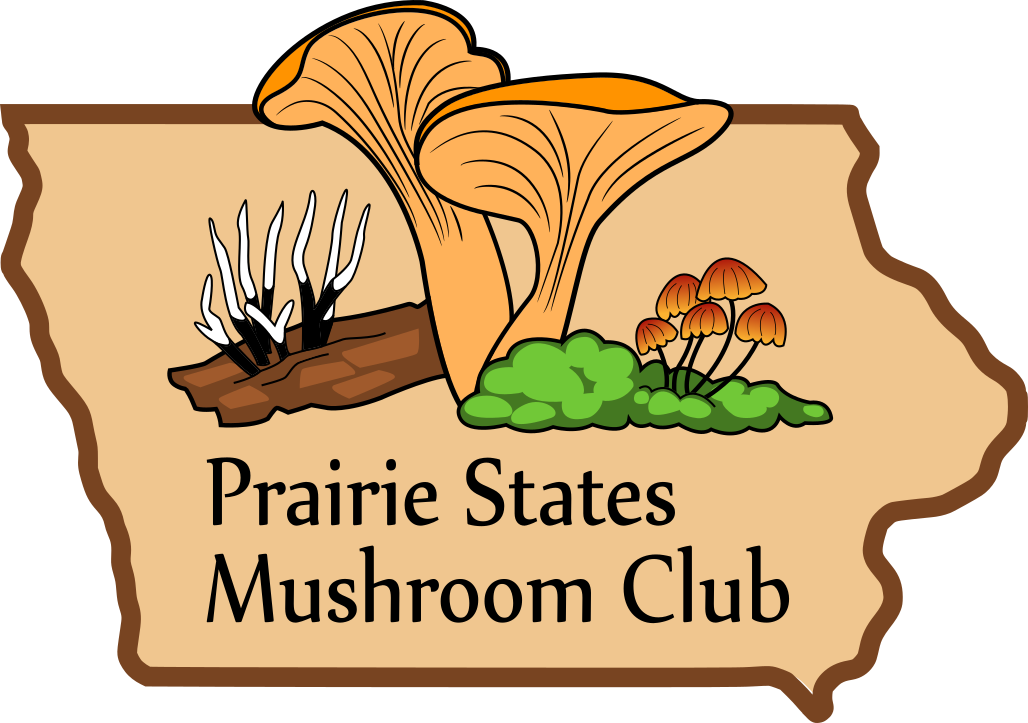Featured Fungus: Panus conchatus A Correction
by Dave Layton
When I told her that I wanted to correct an earlier Featured Mushroom error of mislabeling Panus conchatus as Hohenbuehelia petaloides, PSMC President, Sarah DeLong-Duhon said the following,
"I think all this is an important part of our learning process, whether a seasoned forager or just starting out, that we make mistakes and the best way to deal with them is to acknowledge them, learn something, and move on (as opposed to doubling down I suppose, as some people on the Internet like to do). What you can learn from your mistakes is something you should definitely bring up in your article."
The Hohenbuehelia Featured Mushroom is now in the archives here.
I’ll share what I learned at the end of this feature but first the story. You may have seen these pictures before. They were posted as a featured fungi on the PSMC website sometime after 2010. In the feature I named them Hohenbuehelia petaloides in error. In 2023 I saw a posted comment saying, “These mushrooms are Panus conchatus.” The commenter was right. They clearly show purplish colors on cap, purplish fuzz at the base of the stem and the somewhat ragged gills of Panus conchatus (Lilac Oysterling). So how did I get it so wrong? Maybe it was my one track mind.
Dean Abel had identified H. petaloides at a foray a year earlier. He mentioned smooth gills and a gelatinous layer that can sometimes be felt when handling and it can be seen under a microscope. I didn’t think much of the mushroom, but I loved the name “Ho-hum-buehelia” that Dean gave to it. That was the name I thought of when we encountered tough thin-fleshed tan colored oysterlings at the foray where these pictures come from. We soon found younger caps with lilac hues and a general opinion was that, at least the purplish colored ones, were probably Panus conchatus. I had only a slight familiarity with that species at the time. I should have written the name down but I didn’t. When I studied them more at home, I thought of the wrong genus name: Lentinellus not Panus, and that drove my train of thought right off the track, yet Ho-hum-buehelia was still firmly lodged in my brain.
The funny name I thought these mushrooms had along with the surprising edibility of the younger caps prompted my featuring them. In fact their good flavor almost made me think they were not Ho-hum – but as I said, my one track mind sometimes rules. So I apologize for posting misinformation despite obvious red flags over a decade ago.
That said, my opinion in that post that they are more edible than most sources claim holds true for P. conchatus since that is the species that I really was testing. I stated that parboiling before frying makes more tender outer regions on young ones not only chewable but tasty. Nowadays I would or simmer in chicken or vegetable stock for parboiling.They can be very pleasant in small pieces when added to any meal or salad even. From now on I’ll remember that Lilac oysterlings (a name I won't confuse) are not Ho-hum.
Here’s what I learned from my mistakes in this episode as Sarah advised.
I've learned how important it is to listen to others then write down the names people mention to go with any fungi that one takes home to learn more about. Memory is always subjective. I also learned that a funny name isn't a good enough reason to write an article. I was busy thinking about funny stuff to write when I should have been more questioning and paying more attention to the obvious red flags. Mark Twain said "Never let the truth get in the way of a good story." but I don't think he had mushroom identification in mind when he wrote that.


